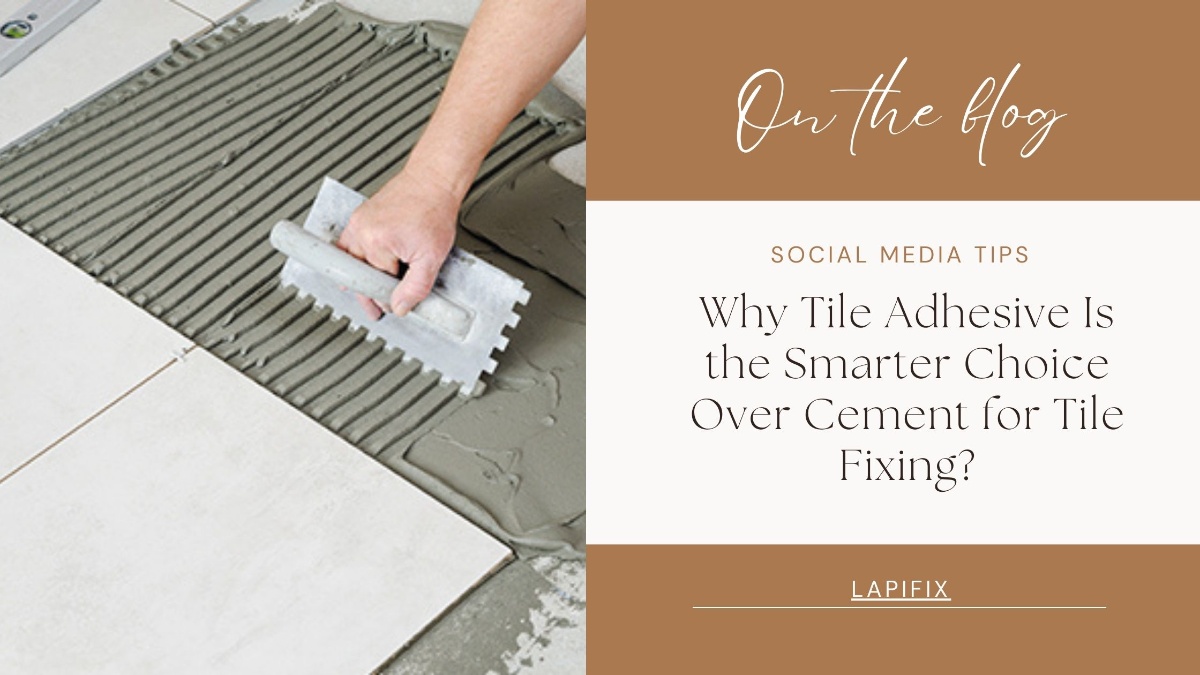


In the realm of tile installation, the choice of bonding material is pivotal to the durability and aesthetics of the finished project. Traditionally, cement mortar has been the go-to adhesive for affixing tiles. However, with advancements in construction materials, specialized Tile Adhesives have emerged, offering distinct advantages over conventional cement. Understanding the differences between these materials is crucial for making informed decisions in residential and commercial tiling projects.
Cement mortar is an aggregate of cement, sand, and water, developing a paste that hardens through the years to bond tiles to substrates. This conventional adhesive is based on mechanical bonding, in which the cement's curing process locks the tile in place. While effective, this approach can be hard work, in-depth and calls for precise blending to achieve the desired consistency and strength.
In contrast, tile adhesives are pre-mixed formulations designed for superior performance. These adhesives regularly include polymers and other additives that improve flexibility, adhesion power, and water resistance. Including those additives allows tile adhesives to form chemical bonds with both the tile and the substrate, resulting in a much better and durable installation.
One of the enormous advantages of tile adhesives over cement mortar is their ease of application. Tile adhesives are ready-to-use and require blending with water, eliminating the need for separate measurements of sand and cement. This simplifies the preparation system and decreases the likelihood of errors at some stage in blending.
Moreover, tile adhesives provide an extended open time, permitting installers greater flexibility all through the location of tiles. This prolonged working time is mainly useful in complicated layouts or large-scale installations in which precision is paramount. In assessment, cement mortar can set incredibly quickly, necessitating swift application and leaving less room for modifications.
The bonding electricity of the adhesive at once influences the durability and resilience of the tile installation. Tile adhesives are engineered to provide advanced adhesion, accommodating diverse tile sorts, which include porcelain, glass, and natural stone. This versatility guarantees a steady bond, even in regions subjected to heavy foot traffic or thermal versions.
Conversely, cement mortar won't offer the equal level of adhesion, in particular with non-porous tiles or substrates. The mechanical bond shaped by using cement can weaken over the years, particularly in environments exposed to moisture or temperature fluctuations. This quandary can lead to troubles consisting of tile delamination or cracking, compromising the integrity of the installation.
Flexibility is a crucial factor in preventing cracks and ensuring the longevity of tile installations. Tile adhesives incorporate polymers that enhance elasticity, allowing the adhesive layer to absorb minor movements and vibrations without compromising the bond. This flexibility is essential in modern constructions, where substrates may experience expansion, contraction, or slight movements over time.
In contrast, cement mortar lacks inherent flexibility, making it more susceptible to cracking under stress. This rigidity can lead to issues such as tile displacement or grout line fractures, necessitating repairs and diminishing the overall durability of the installation.
Water resistance is an essential consideration, especially in areas like bathrooms, kitchens, or swimming pools. Tile adhesives are formulated to be water resistant, providing a protective barrier that stops moisture penetration. This characteristic reduces the danger of mildew bloom, efflorescence, and other moisture-associated problems, ensuring a hygienic and long-lasting installation.
On the other hand, cement mortar is porous and can take in water, leading to potential troubles together with weakening of the bond, staining, or mold improvement. To mitigate those dangers, cement-based installations regularly require extra waterproofing measures, adding to the complexity and value of the project.
Tile adhesives contribute to the time performance in tile installations. Their ready-to-use nature and simplicity of software streamline the tiling process, reducing hard work time and associated fees. Additionally, the robust preliminary bond permits for faster grouting and the task of entirety.
While the cost of tile adhesives may be better than that of cement, the general savings in exertions and decreased need for extra substances, along with primers or waterproofing retailers, can offset the initial investment. Furthermore, the enhanced durability and decreased upkeep necessities related to tile adhesives can result in long-term cost benefits.
Modern tile adhesives are often formulated with environmental considerations in mind. Many products are low in volatile organic compounds (VOCs), contributing to healthier indoor air quality. Additionally, the precise application of tile adhesives minimizes waste, aligning with sustainable construction practices.
In contrast, cement production is associated with significant carbon dioxide emissions, and the mixing process can generate dust, impacting both the environment and worker health. Choosing tile adhesives can therefore be a more environmentally friendly option in tile installations.
The evolution from traditional cement mortar to specialized tile adhesives represents a significant advancement in tile installation practices. Tile adhesives offer numerous benefits, including ease of application, superior bonding strength, flexibility, water resistance, and environmental advantages. While cement mortar has served the construction industry for decades, the specialized formulations of tile adhesives provide solutions that meet the demands of modern building standards and aesthetic preferences.
La Pifix recognizes the importance of selecting the appropriate adhesive for each project, understanding that the choice between cement and tile adhesive can significantly impact the outcome of a project. By considering the specific requirements of the space, the type of tiles being used, and the desired longevity of the installation, incorporating tile adhesives can lead to more durable, efficient, and aesthetically pleasing results.